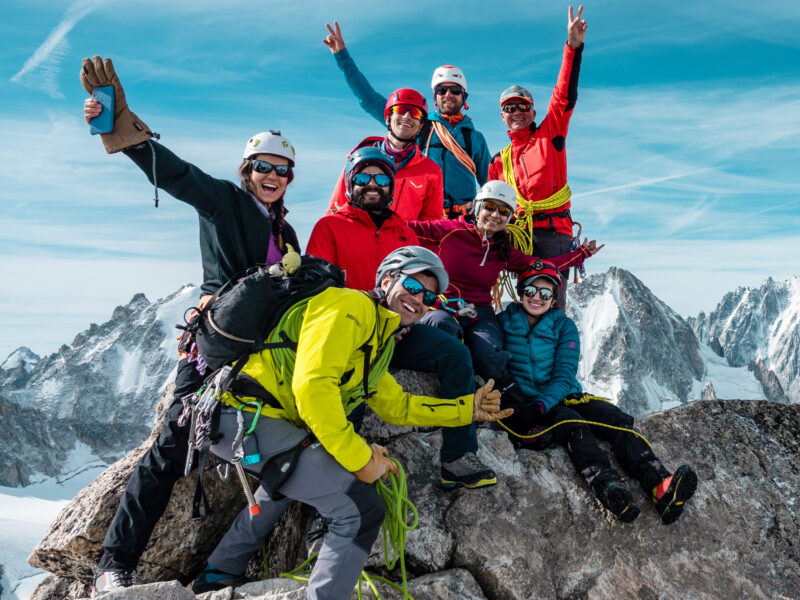BY Rami Rasamny | June 05 2023
How to Choose Waterproof Layers
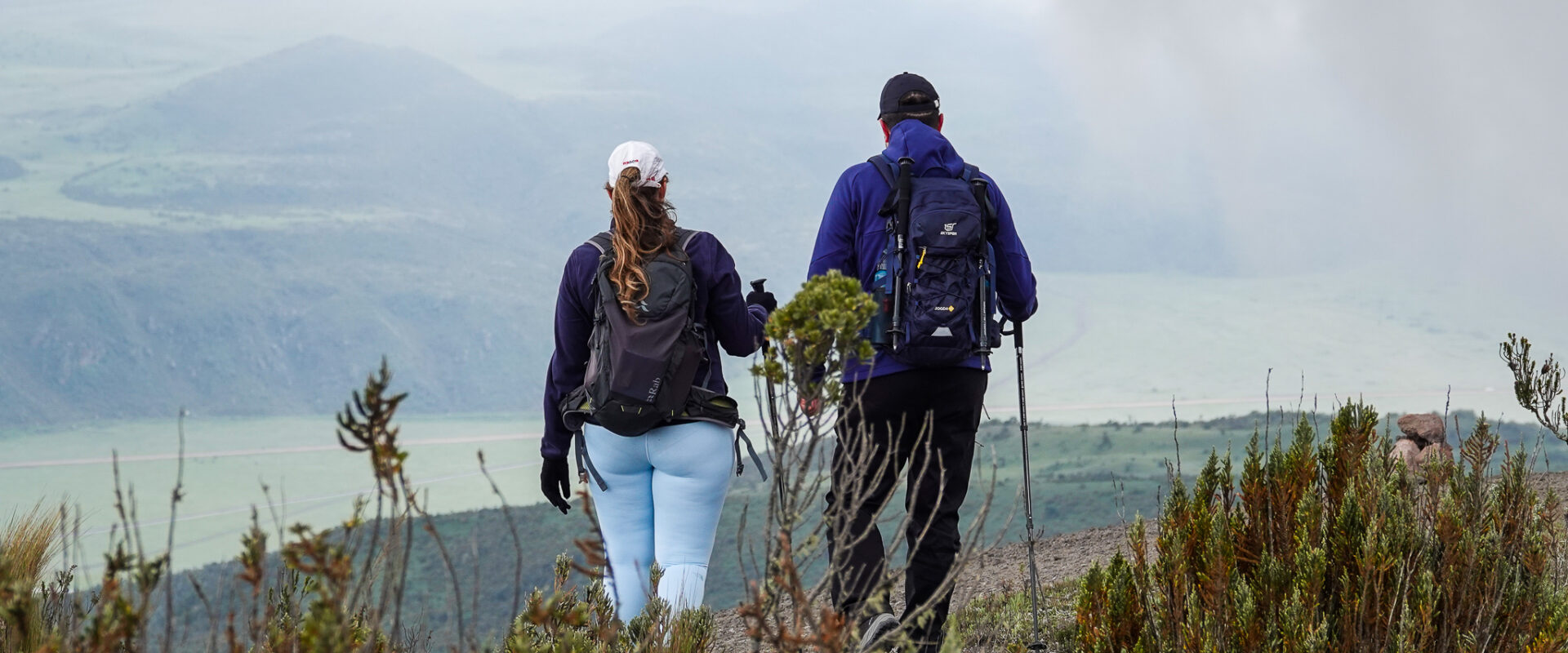
Chances are that we’re going to experience at least some rain during our adventure together. With the right waterproof layers, it can actually be an enjoyable experience that adds an exciting element to the trip. The following article explains the different types of waterproof layers. Please refer to your trip guidebook for the appropriate layers and quantities for your adventure.
Waterproof Poncho
This is the classic waterproof layer suitable for trekking and multi-adventure itineraries. It is not suitable for the climbing portions of mountaineering expeditions and courses, although it can be used for the approaches and during trekking days leading up to the climb.
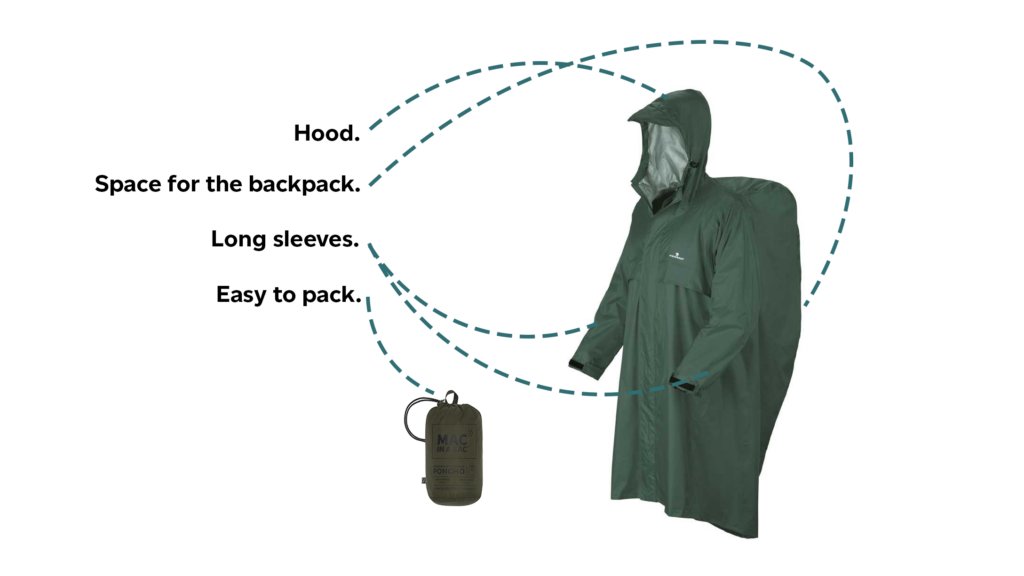
When choosing a poncho, make sure it includes a hood and is large enough to cover both your body and your backpack. Check to make sure the sleeves are long enough to cover your wrists. It should also be lightweight and easy to open and pack. We do not recommend disposable ponchos because they tend to rip easily and are not environmentally friendly.
Umbrella
The classic umbrella can have some utility on multi-adventure itineraries. They are generally not appropriate for long trekking itineraries and certainly not suitable for mountaineering trips. The limitation comes from the wind. They don’t perform well in the wind and can easily be damaged or swept away. Needless to say, they aren’t environmentally friendly when that happens!
Waterproof Pants
NYLON PANTS

The most basic waterproof pants are nylon rain pants, also known as overpants. These are cheap, long-lasting, and lightweight. It’s a good idea to have a pair of these for all adventures, including multi-adventure, trekking, and mountaineering trips. When choosing your pants, make sure they can easily be worn over your pants without the need to take off your boots. Most nylon pants will have buttons or a zipper at the ankle to widen them for the trekking boot to fit through easily.
HARD SHELL PANTS
For trips with longer exposure to the elements, such as Kilimanjaro, Everest Base Camp, Annapurna Base Camp, and all mountaineering itineraries, we recommend Gore-Tex pants in addition to the basic nylon rain pants. “Gore-Tex” is a waterproof technology used in adventure gear, but it is by no means the only waterproof technology available. When choosing pants, make sure that they use some form of waterproof technology, be it Gore-Tex or something else. These pants, also known as hard shells, do not require nylon rain pants and are worn like regular trousers as part of your general layering system. They are much more effective against wind and rain and do not easily tear.
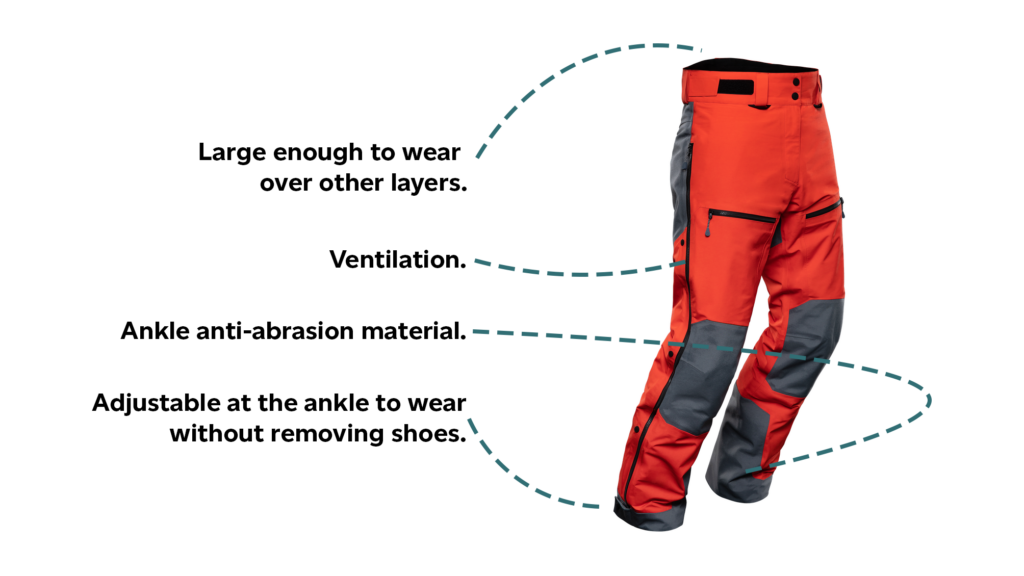
When choosing your hard shell pants, make sure that they fit well with other layers underneath. It’s also worth investing in pants that have zippers for ventilation especially for summer adventures or itineraries where a faster moving pace is required. The pants should also be adjustable at the ankle to be able to remove them or wear them without the need to take shoes or boots off. For mountaineering itineraries, look for pants with anti-abrasion (anti-tear) material at the ankles to prevent crampon clipping.
Gaiters
Gaiters are worn over the shoe and ankle to prevent water, snow, or mud from entering the shoe through the ankle opening. They come in many shapes and sizes.
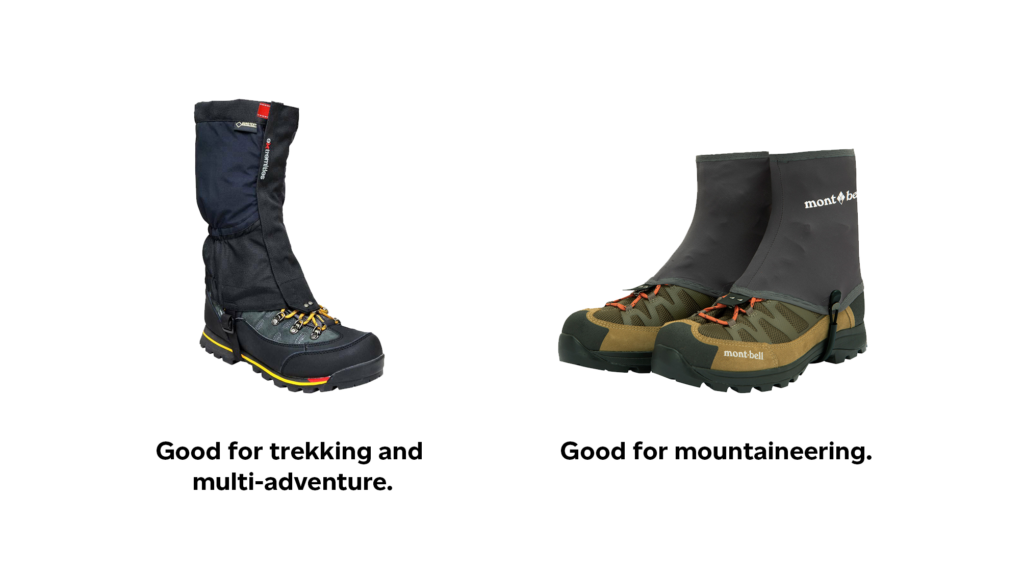
For trekking and multi-adventure itineraries, any gaiters will work. Although most gaiters are adjustable, make sure the ones you get are the right size for your boots. On mountaineering itineraries, we recommend minimal gaiters that fit subtly over the ankle. This is because most mountaineering pants will have some form of built-in gaiter, and we also want to avoid having anything bulky that the crampons clip to, which could cause a tripping hazard.
Waterproof Jackets
Waterproof jackets are known as hard shells. They are typically made of Gore-Tex material and also serve as windbreakers. When choosing the right hard-shell jacket for your adventure, you need to consider size, ventilation, and insulation.
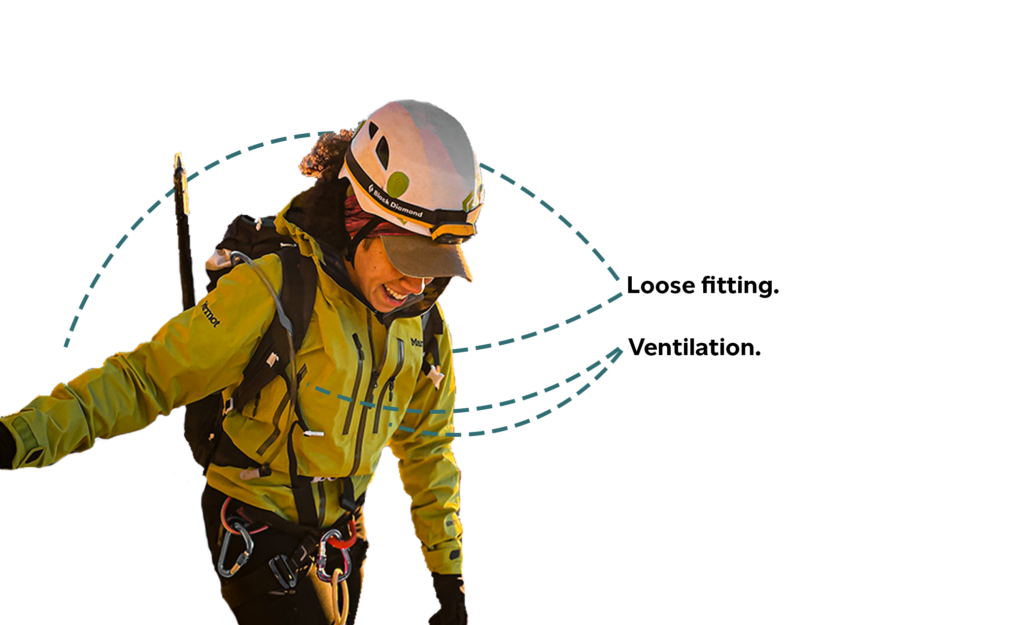
SIZE
The hard shell is normally worn as the outermost layer above all other layers. Make sure that when trying it on, it fits comfortably over everything else. Ensure that your shoulders don’t feel constricted when you reach your arms out in front of you and grab opposite elbows.
VENTILATION
It may be rainy and windy, but it may also be warm, especially when we’re on the move. Make sure the jacket you choose has ventilation zippers that allow air in. Ventilation zippers are typically located on the sides and under the arms.
INSULATION
Just because it rains doesn’t mean it’s cold. Make sure that the hard shell you purchase has as little insulation built into it as possible. Some jackets come with removable down or fleece layers. These are fine as long as they are removable. A ski jacket typically has insulation built into it, which is why it would not be appropriate for a multi-adventure, trek, or mountaineering itinerary. Flexibility of the layering system is key when it comes to selecting adventure apparel in general.
Reach Out!
If you have any questions at all, please don’t hesitate to reach out to us!
About The Author
Rami Rasamny is the founder of Life Happens Outdoors, a premium adventure travel community dedicated to transforming lives through curated outdoor experiences. A mountaineer and entrepreneur, Rami has led teams on some of the world’s most challenging peaks, from the Alps to the Himalayas. His mission is to make adventure accessible, transformative, and safe for all who seek to push their limits and Come Back Different.
About Life Happens Outdoors
At Life Happens Outdoors, we believe in the power of nature to transform lives. As proud members of the Adventure Travel Trade Association (ATTA) and the World Travel & Tourism Council (WTTC), our team of certified guides and outdoor professionals is committed to the highest standards of safety, sustainability, and excellence.
Discover more about our story and mission on our Meet LHO page, or explore our curated adventures such as the Tour du Mont Blanc Trek, the Climb of Kilimanjaro, and Chasing the Northern Lights.












